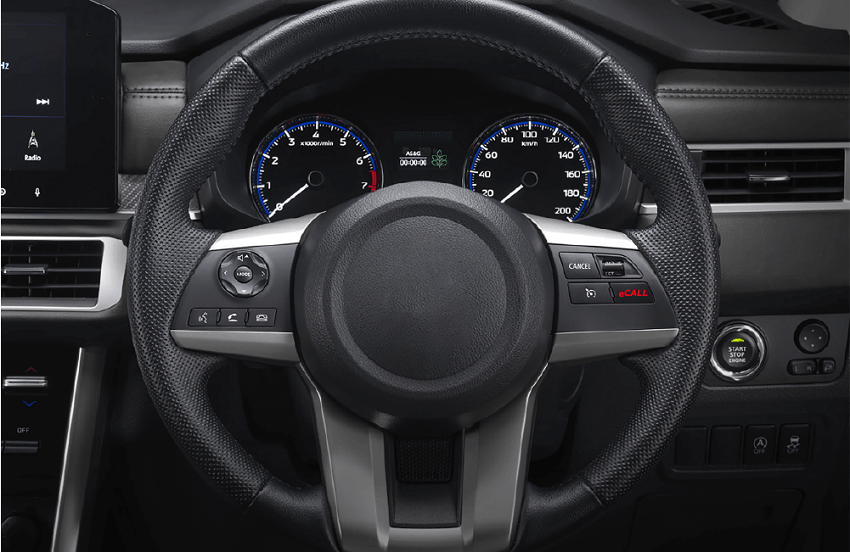What network features are important for IoT deployments?
by Baruch Pinto
In one of our previous posts, we explained how Full MVNO is different from other mobile operators and why owning certain core network elements is critical when providing connectivity for IoT deployments.
While it’s critical that your provider owns key parts of the core network, it may not be enough for some use cases. Each industry vertical today has usage scenarios that require a connectivity operator to support additional technologies and protocols and have additional elements in their core network.
With industries having diverse requirements, a different set of network features would be important for every single deployment. For example, smart meters would prioritize massive network connection density over bandwidth and latency, while telemedicine and autonomous driving would depend on low latency and reliability. Some may focus on bandwidth, others on long battery life. Furthermore, as industry verticals realize the limitations of their existing connectivity solutions, they recognize the need for more advanced network capabilities to support future use cases.
From a connectivity provider perspective, this means that core network evaluation is essential for each IoT deployment. Some scenarios may need extra capabilities from the core network in terms of usual requirements, such as guaranteed latency, in some cases it may need adaptation to be able to use new technologies. Let’s look at three different verticals’ cases to see what network services are required for their implementation.

Automotive: eCall
The automotive industry has a wide variety of use cases in terms of connectivity: from telematics to navigation systems, a lot of data is transmitted to and from a connected car. Yet it may need more than just data connectivity: for instance, voice communications like eCall.
eCall is an emergency call that is automatically generated from a sensor inside the vehicle in case of a serious road accident. A mandatory function in many countries, the call is made to the nearest emergency-response network, and includes data on coordinates, time of the accident and the direction of travel to help the rescue services.
According to the basic technical requirements laid out in the regulation (EU) 2015/758, eCall system should support two-way voice communication between the vehicle and the emergency call center. Depending on the type of cellular network used (3G, 4G or 5G) this may demand that a connectivity provider has different core network architecture with relevant nodes responsible for voice communication. For instance, if 3G services in the country have already been shut down, your connectivity provider’s core network would need to support voice in 4G networks, i.e. VoLTE.
Voice over LTE (VoLTE) requires the deployment of an IP-Multimedia Subsystem (IMS) Network, which includes several new Core Network entities that enable connectivity over IP with guaranteed Quality of Service (QoS) to meet the basic requirements of a regular (Circuit-switched based) voice call.
What is APN and why does it matter
It is worth noting here that along with the necessary core network features, vehicle-related use cases may require extra capabilities in other systems used by connectivity providers, such as separate billing. Typically, when serving a customer, mobile operators use a single billing system that helps charge the user for all services provided. However, a connected car may require more billing options. Upon purchasing it, the owner uses infotainment capabilities like navigation and multimedia streaming, while the OEM needs an Internet connection for telematics such as real-time diagnostics and remote updates. With a traditional billing system and a single bill, it would be hard to decide which party it should be sent to. Besides, these two different types of data usage should be charged differently, using a flat monthly fee for telematics and a per-gigabyte plan for infotainment.
It is network settings that provide a solution to this use case. Each device may be configured to route data through the network using a predetermined access point name (APN), which may correspond to a certain gateway. Thus, it is possible to route telematics data to one billing system that generates a bill for OEM and infotainment data to the other billing system that can charge the end user. Having multiple APNs for the same user allows customized billing models and better expense control for the customers.

Healthcare: Remote Surgery
Healthcare has diverse use cases for hundreds of types of connected IoT devices – like many other verticals. At times, however, it can be most demanding of them all when it comes to connectivity.
A good example of a scenario that is critically dependent on core network features is remote surgery. In this scenario, the entire treatment procedure of patients is executed by a surgeon at a remote site, while his hands are replaced by robotic arms. It can be applicable in ambulances, disaster situations or remote areas requiring precise control and feedback communication mechanisms for surgeons. For obvious reasons, it requires an ultra-reliable connection with very low latency: the feedback to the surgeon must be as immediate as possible to ensure that the surgeon’s actions are not slowed or limited by network latency. Haptic feedback to the surgeon where they “feel” the resistance of their tool as it cuts has a round-trip time requirement of as low as 1 ms.
Ultra-Low Latency Connectivity for Life-Critical Use Cases like Remote Surgery
All mobile networks before 5G were best-effort networks, so having a connection for remote surgery with specific SLA requirements is only possible via 5G network. It is important to note that the question of the core network may become a bit complex here. Since 5G networks became available, for the purpose of deploying 5G quickly, many mobile operators chose the Non-Standalone 5G option (5G NSA), which combines a 4G Evolved Packet Core (EPC) network with 5G Radio Access Network (5G NR). Technically, this architecture cannot offer some true 5G NR features, compared to Standalone 5G (5G SA) with a true 5G core network. One of such features is the support of ultra-reliable low-latency communications (URLLC): 5G SA capabilities meet the critical 1 ms requirement mandatory for the remote surgery use case, while 5G NSA capabilities don’t.

Agriculture: Environmental Monitoring
There are also use cases that do not have any specific requirements in terms of latency, bandwidth or reliability. Yet even they may demand certain core network features.
One of the most illustrative examples in agriculture is sensors used for environmental monitoring. These little devices help monitor farm fields, rivers, wilderness, and protected conservation areas for conditions, equipment operations, intrusions etc. Most of the sensors need to work in places without extensive power or communication infrastructure, while their lifecycle may exceed 10 years, therefore their main requirement is low power consumption.
Low-Power Connectivity for Environmental Monitoring and Remote Sensors
In such circumstances, it will be critical to ensure that the core network supports necessary protocols and technologies, e.g. LPWAN like NB-IoT. It is a low-power narrowband technology incapable of cell tower handover and only suitable for stationary devices. NB-IoT has features like Power Savings Mode (PSM) and eDRX (Extended Discontinuous Reception), reducing the power consumed by battery-powered modules. It also uses half-duplex communication, which means that at any given moment either the module or the cellular base station is transmitting data (never simultaneously). As a result, NB-IoT can provide good power efficiency and enable long battery life.
Before deploying devices using NB-IoT, your connectivity provider’s core network may need adaptation. NB-IoT can use the LTE Evolved packet core network, but it needs some extra nodes such as the Service Capability Exposure Function (SCEF) that basically serves to open the capability of core network elements for various applications.

Webbing’s Network
Webbing is a full MVNO and has a fully redundant distributed core network infrastructure with data centers on every continent, local breakouts and multiple network solutions. It makes IoT deployments of any scale and any configuration feasible in the shortest possible time, no matter what geographically specific architecture they may require. It helps us provide stable connection, high data throughput, consistent bandwidth and low latency to all devices. Our network also allows us to work with all kinds of network technologies, including LPWA standards. As such, it is well suited to support all types of use cases, including mission-critical and high-data consumption.
In combination with 600+ partnership agreements with mobile network operators all over the world our core network gives access to infrastructure in any region and eliminates the problem of regulatory compliance including all data localization and sovereignty requirements, whatever the scale of the project may be.
Webbing’s network also offers a centralized way to manage devices throughout their lifecycle. It allows for defining business rules that enable devices to change the carrier independently in case of location change or connectivity loss, and provides visibility to profile usage and network events. This helps manage connected devices in bulks, easily scale global IoT deployments and monitor data usage of each device.
Webbing’s solution for the automotive industry supports eCall in 3G and 4G networks. We offer a split billing option with multiple APNs for the same user, allowing for billing customization and different types of plans for different data. Our distributed core network helps us tailor our connectivity offering not only based on how much the customer pays for a terabyte of data transmitted, or on the locations where IoT devices are deployed, but rather aiming at overall optimization of the total cost of operations for the client.
Reach out to learn how Webbing connectivity solutions can help you deploy, manage and optimize your IoT deployments worldwide.




